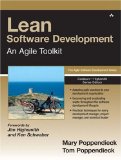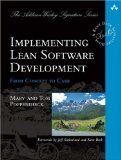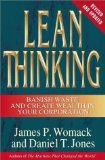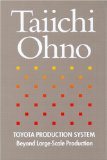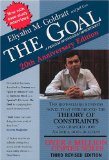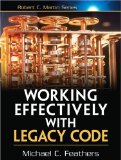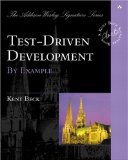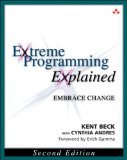8 books to kickstart your adoption of Lean Software Development
This is the book you must absolutely read. It covers succinctly the basic principles of Lean Software, and directly how to implement them. It identifies and covers in depth seven fundamental lean principles: Eliminate Waste, Amplify Learning, Decide as Late as Possible, Deliver as Fast as Possible, Empower the Team, Build Integrity In and Seeing The Whole.
"Lean Software Development helps you refocus development on value, flow and people- so you can achieve breakthrough quality, savings, speed and business alignment."
Implementing Lean Software Development
Effectively Lean Software Development Volume 2. This book picks up where the last one left off. It adds depth, clarity and a breadth of examples.
"You'll discover the right questions to ask, the key issues to focus on, and techniques proven to work."
Bonus Points: The author, Mary Poppendieck, gave a google tech talk: Competing on the Basis of Speed
One hour of solid gold." - AgileGameDevelopment.com
Lean Thinking : Banish Waste and Create Wealth in Your Corporation
While not being explicitly about software, this is the book where I finally grokked Lean Software. The analogies to Software are obvious, and this book taught me more about making the transition to lean processes than any other book on this list. It's full of case studies about the exact steps companies used to transition from batch (waterfall) processes into Lean processes.
"In contrast with the crash and burn performance of companies trumpeted by business gurus in the 1990s, the firms profiled in Lean Thinking - from tiny Lantech to mid-sized Wiremold to niche producer Porsche to gigantic Pratt & Whitney - have prospered, largely unnoticed, along a steady upward path through the market turbulence of the nineties. Meanwhile Toyota has set its sights on the leadership of the global motor industry."
Toyota Production System: Beyond Large-Scale Production
This was the book that introduced the world to Lean, before it was called Lean. Not only does it introduce the theory in abstract, it also gives detailed explanations for some of the practices in Lean Software. The best example of this is the Five Whys root cause analysis; you simply state the failure or defect, and then ask why five times over. This ensures that you don't solve a low level symptom of a higher level problem, when you could solve the higher level problem; thus dissolving the low level symptom.
"The most important objective of the Toyota system has been to increase production efficiency by consistently and thoroughly eliminating waste."
The Goal: A Process of Ongoing Improvement
A truly unique narrative about a fictional manufacturing plant. This book explains the Theory of Constraints, a theory which fits into the Lean mindset perfectly. A fascinating example of how to use a book to teach via the Socratic method. A quick read, so it's high ROI!
"It's about people trying to understand what makes their world tick so that they can make it better."
Working Effectively with Legacy Code
Forget the title. PLEASE. Terrible title. Commonly referred to as just "Working Effectively. The first pages of the book redefine "Legacy" to mean "Code without tests." This book is about taking existing code that has no tests, and incrementally adding test coverage, all the while delivering value to customers. This is how you solve the "This code is crap" problem without going through the full rewrite song/dance/failure.
"Is your code easy to change? Can you get nearly instantaneous feedback when you do change it? Do you understand it? If the answer to any of these questions is no, you have legace code, and it is draining time and money away from your development efforts."
TDD is practically a requirement for keeping up development velocity, a fundamental requirement of Lean Software. This is the classic TDD book. Unfortunately it's not the best introduction, because it appears deceptively obvious until you actually get Test Driven Development. If you're already practicing and have bought into TDD then read this book to really hone your skills and intuition.
"By driving development with automated tests and then eliminating duplication, any developer can write reliable, bug-free code no matter what its level of complexity. Moreover, TDD encourages programmers to learn quickly, communicate more clearly, and seek out constructive feedback."
This book lays out the fundamentals of Agile Software Development, which is effectively a subset of Lean Software Development. This is walk-before-you-run territory: if agile is still a foreign concept, start here instead of Lean Software.
"Every team can improve. Every team can begin improving today. Improvement is possible- beyond what we can currently imagine. Extreme Programming Explained, Second Edition, offers ideas to fuel your improvement for years to come."
